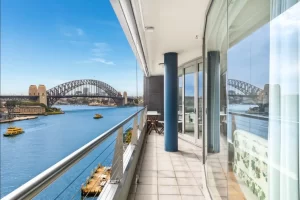Vacancy rates fell to a record low of 1 per cent nationwide in March, as rental supply dwindles and demand ramps up following the return of international students, data from Domain shows.
The proportion of available rental homes across all capitals has now dropped below 2 per cent, indicating a shift favouring investors, said Nicola Powell, Domain’s chief of research and economics.
“All capital cities are now operating in a landlords’ market, the first time this has happened since Domain records began in 2017,” she said.
“After just one month of international and all domestic borders opening, we are already seeing increased pressure on an already strained rental market.
“Many tenants have also moved back to the inner cities where apartment rents were cheaper than houses and this caused a resurgence in rental demand, particularly in Sydney and Melbourne, which again have recorded the biggest drop in vacancy rates.”
Sydney’s vacancy rate fell to 1.4 per cent, its lowest point since Domain records began, while Canberra and Perth posted an all-time low of 0.5 per cent.
Adelaide recorded 0.2 per cent – the lowest vacancy rate across any capital city since Domain started tracking the series. In Melbourne, the vacancy rate fell to 1.8 per cent, the lowest level since the onset of the pandemic.
Terry Ryder, director of property research firm Hotspotting, said rental markets nationwide were experiencing chronic rental shortage, which would push rents to record highs.
Chronic shortage
“The industry standard has always been that a 3 per cent vacancy rate represents a balanced market, where there’s a reasonable level of supply and rents are stable,” he said.
“Once vacancy rates start falling below 3 per cent, you’re getting into rental shortage and once you get down below 2 per cent or 1 per cent like what we’re seeing across the country, you’re entering a chronic undersupply territory where rents will be rising strongly.”
During the month, rental listings have fallen sharply across the capitals except for Hobart, which recorded a 28.8 per cent increase in rental listings as investors continued to pile in.
In Sydney, rental listings fell 12.4 per cent to 8376, it fell by 12.5 per cent to 9228 in Melbourne, was down by 20.4 per cent to 1635 in Brisbane and lower by 31.5 per cent to 241 in Adelaide. Nationally, rental stock has dropped by 11.2 per cent to 25184.
In the past 12 months, rental stock has plummeted in all capitals with Melbourne dropping by 56.9 per cent, Sydney by 48.9 per cent, Brisbane by 49.9 per cent and Adelaide by 68.6 per cent. Nationally, rental stock dropped by 52.2 per cent.
As a result of the tightening rental conditions, asking rents have surged to record highs with rental prices likely to jump higher in the coming months, Dr Powell said.
“Many cities are sitting at record high asking rents with the current tightening conditions swinging favour towards landlords and bolstering any future potential rental price increases,” she said. “The rise in overseas migrants, who will rent upon arrival, will spiral rental demand further and worsen conditions for tenants.”
During the December quarter, median asking rents for houses jumped to record highs across the combined capitals.
It climbed by 9.1 per cent to $600 in Sydney, it was up by 12.9 per cent to $480 in Brisbane and 9.8 per cent higher to $450 in Adelaide.
In some areas, such as in Sydney’s eastern suburbs Vaucluse and Double Bay, asking rents for a house soared by 47 per cent and 42.9 per cent over the year respectively. In Mount Coolum on the Sunshine Coast, strong demand and low supply fuelled a 47.1 per cent rise in asking rents over 12 months.
“I don’t recall in all the time I’ve been researching real estate where we’ve had vacancy rates so low and rents are rising as fast as house prices in so many locations,” Mr Ryder said.
“This rental crisis is getting worse because investors have been discouraged from getting into the market by a range of policies by the government, APRA and the banks.
“Both the federal government and the opposition have policies around housing affordability to help first home buyers get into the market, but there appears to be little if any that addresses the rental shortage, which I think is an even bigger crisis.”
This article is from Australian Financial Review, please click the following link for the original article: https://www.afr.com/property/residential/it-s-a-landlords-market-as-vacancy-rates-fall-to-1pc-nationally-20220404-p5aakf




